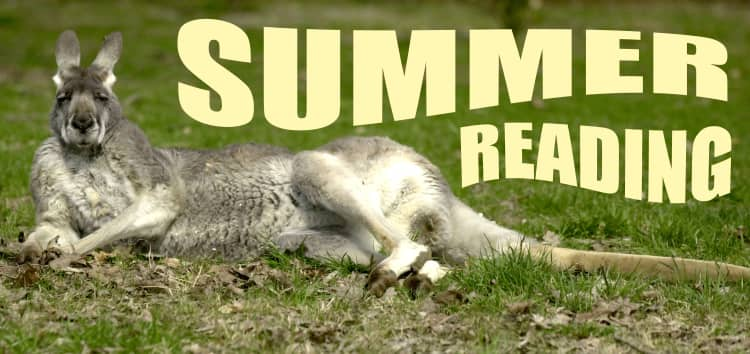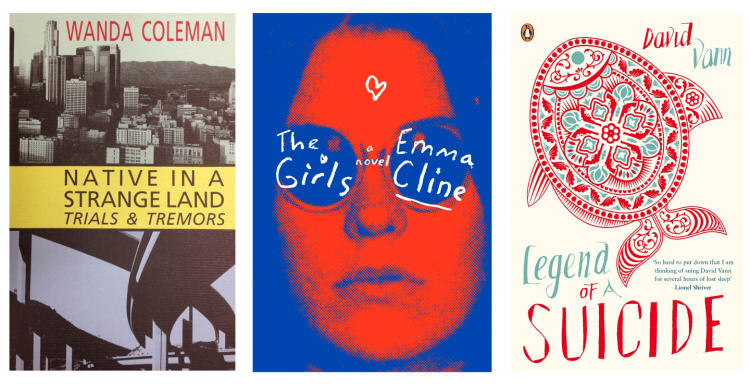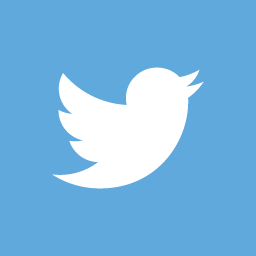21 Books That Will Enrich Your Summer
Become a better, smarter person by August.

We know, we know, it's tempting to give all intellectual pursuits up once summer commences: the glasses and glasses of rosé and piña coladas that are all of a sudden de rigeur (why are they ever not), the call of beach towels peppered with sand, the sunsets that lull you away from the page and into a nap in the grass. But summer will always be there, warm and waiting. Don't emerge, freckled and raw come August, and realize you're the same shitty person who beckoned the beach in June. Make yourself better. Read a book. Here are a few suggestions.

1. Native in a Strange Land: Trials & Tremors, Wanda Coleman
Nonfiction, Pages: 292, Published: 1996.
The realities of Black Los Angeles in the 1990s have never felt more alive and present than they do in Wanda Coleman’s prose. Native in a Strange Land: Trials & Tremors offers an honest account of a city fractured by race, poverty, and state failure. It will break you open in the best way. Get it here.
2. The Girls, Emma Cline
Fiction, Pages: 368, Published: June 2016.
No one ever says you can't judge a book by its opening line, because truthfully you can. And The Girls starts with a great one: "I looked up because of the laughter, and kept looking because of the girls." It's one of those perfect sentences that totally wrecks you, the first of many in Emma Cline's sleepy debut novel, which follows a lonely 14-year-old girl as she's hypnotized by the no-frills beauty of a Manson-like cult during the hazy summer of 1969. Get it here.
3. Legend of a Suicide, David Vann
Fiction, Pages: 208, Published: 2008.
Came across this while searching for book recommendations from Lorrie Moore. Across a few short stories and one shocking novella, the author attempts to process his father’s suicide through fiction. The success of his graceful and moving tribute is thanks, partly, to memorable descriptions of its varied settings: much of it takes place in the Alaskan wilderness, where things gets lost and not always found. Get it here.
4. The Chapess
Zine.
The Chapess is a Manchester-based punk feminist zine that showcases new writing, art, and photography by women. Expect visceral personal essays, intimate portraits of beautiful people, barbed erotic poetry in all caps, and poignant pages you'll want to tear out and keep. You can now pre-order an anthology of the first 9 issues for £12, which will be out in June. Get it here.
5. Tuesday Nights in 1980, Molly Prentiss
Fiction, Pages: 336, Published: April 2016.
Reviews of this Manhattan-based novel will more often than not include the adjective "intoxicating," which in this case isn't as hyperbolic as you might think. If you're on the verge on leaving the city, striking out for greener pastures, Tuesday Nights in 1980 might just be the book that reels you back in. Get it here.
6. With A Little Bit Of Luck, Sabrina Mahfouz
Play, Pages: 64, Published: April 2016.
The live production of Sabrina Mahfouz’s With A Little Bit of Luck is aptly described as “theater you can rave to”: it’s a blend of traditional theater and live music, with a soundtrack of early-aughts British hits. But for those unable to attend a showing of Luck, Mahfouz’s play is still a treat. Set in London during the summer of 2001, it uses a night of raving and the genre of U.K. garage to tell an insightful story about politics and youth in revolt. Get it here.
7. The Voice Of The Jamaican Ghetto, Vybez Kartel, Adidja Palmer
Nonfiction, Pages: 271, Published: 2012.
Vybz Kartel is a singular figure in contemporary music. His autobiography, The Voice of the Jamaican Ghetto, tells a sweeping story about his life through the lens of Jamaica's social and political realities. Tales of corruption and oppression offer a historical context that adds depth to his prolific catalogue and makes his Malcolm X-inspired pose on the book's cover seem a little less crazy. Get it here.
8. Prayers for the Stolen, Jennifer Clement
Fiction, Pages: 224, Published: February 2014.
This story of living in a land ruled by drug cartels is smothered in the irrepressible Mexican heat, and pulls you feet first into a world where everything can change in an instant. Get it here.
9. Uproot: Travels in Twenty-First-Century Music and Digital Culture, Jace Clayton
Nonfiction, Pages: 288, Published: August 2016.
The story of how one three-turntable, sixty minute mix was the gateway for one DJ to travel a world for whom the internet was just beginning to crack open an infinite trove of music. True, but that can be tough to believe. Required reading in our (nearly) post Soundcloud era. Get it here.
10. Among the Thugs, Bill Buford
Fiction, Pages: 320, Published: 1990.
This is my man Bill Buford hanging out with a bunch of deranged British football hooligans in the true bad old days of that sport's violence. It's from 1990 but revisited it recently and Oh my God. At one point he describes a gang of Manchester United supporters going to Turin, Italy for a Juventus game, and makes it sound like a full-on foreign army has invaded and taken the city. Also look at this fucking book cover, I could stare it forever.
Get it here.
11. "In The Penal Colony," Franz Kafka
Short Story, Published: 1919.
This Kafka short story is delicate and disturbing at the same time. Read it slowly. Read it here.
12. Hidden Eye
Zine.
There's a lot to feast on inside the debut issue of Hidden Eye, a pocket-sized magazine founded by Merchandise frontman Carson Cox. It features a cohesive design that's somewhere between grim and mystical, plus a string of thoughtful interviews and original writings about loud music, visual art, and underground culture at large. Even Hidden Eye's ad pages, which include promos for David Vassalotti's new weirdo rock LP and hand-printed designs by L.A. brand Cometees, feel meticulously curated. Get it here.
13. Mouthfeel
Zine.
This small-run NY publication draws links between counter-culture, food, and queer culture, and is one of the most refreshing gay mags since BUTT. Contributors to Issue 2 include Slava Mogutin and Danielle Levitt, with Mouthfeel's smart profiles, punchy design, and raunchy photo essays designed to work up an appetite. Buy Issue 2 here.
14. The Lost Scrapbook, Evan Dara
Fiction, Pages: 476, Published: 1996.
The Lost Scrapbook is billed by its publisher—who is most likely just the author himself, who is most likely pseudonymous—as "the most highly praised, but least known, American debut of the last several decades.” It’s got the blurbs to back it up, and here’s another one. Published the same year as Infinite Jest, this book is as formally ambitious, except honestly probably better. It makes postmodernism, and reading, worth the effort. Get it here.
15. How to Ruin Everything, George Watsky
Nonfiction, Pages: 240, Published: June 2016.
Rapper George Watsky wrote a funny, subversive and super honest book of essays based off of his personal experiences navigating life before and during his rap/poetry career. You get to experience everything from his journey through Europe to how he handles life with epilepsy. I think that everyone who reads it will find that they can relate, on some level, with Watsky. Get it here.
16. Ametora, W. David Marx
Nonfiction, Pages: 296, Published: December 2015
Ametora is an incredible almost-pocket-sized history lesson on how Japan embraced American style and then made it better, from Ivy League style, to streetwear, denim, and beyond. Get it here.
17. Afeni Shakur: Evolution of a Revolutionary, Jasmine Guy
Nonfiction, Pages: 240, Published: 2005.
We'd always heard from Afeni Shakur through Tupac's old interviews, but this book gives in-depth background to her life and activism. It explored her involvement with the Black Panthers, her self-awareness journey and the truth behind her trials as a mother to Tupac and his sister.
18. Homegoing, Yaa Gyasi
Fiction, Pages: 320, Published: June 2016.
A surprisingly simple read with a massive objective: to tangle the histories of West Africa and black America through the lineages of two sisters born in 18th century Ghana. Gyasi devotes each chapter to a new character on the family tree, which means you become absorbed with and separated from a series of fascinating, very human beings without knowing more than a brief vignette from lives lived both fully and tragically. The first book I've read in a long time that I didn't want to end. Get it here.
19. Zero K, Don DeLillo
Novel, Pages: 288, Published May 2016.
DeLillo's latest revolves around a mysterious cryonics center called the Convergence run by immortality-seeking transhumanists, and is getting the master—now nearly 80 years old—some of the best reviews of his illustrious career. The best part: it's not all thaaaaaat far removed from our day to day. Get it here.
20. A Floating Chinaman, Hua Hsu
Nonfiction, Pages: 288, Published: June 2016
This tome documenting the race between historians competing for the title of America's foremost expert on China is an absorbing read that transcends the stuffy corridors of academia. Written by cultural critic and The FADER contributor Hua Hsu, A Floating Chinaman is destined to become required reading. Get it here.
21. Incantations and Other Stories, Anjana Appachana
Short stories, Pages: 160, Published: April 1992.
Junot Diaz's reading list is always very thorough, and when he rolled through Toronto last month he shouted out another batch of novels that were formative influences for him including this book of short stories published in 1992. Incantations is mostly set in India in the 1980s—a time of serious political upheaval—and it's important because it captures a country in transition; battling modernity, preserving tradition, struggling with ideas of community versus self. Definitely not a sari-and-mango novel. Get it here.




